The latest and most complete celery planting technology!
Celery belongs to Umbelliferae. There are three kinds of water celery, celery and celery, which have similar functions, and it is better to use them as medicine. Parsley has a strong aroma, which is called "medicinal parsley". But it is not the same as cilantro. Celery is rich in protein, carbohydrates, carotene, B vitamins, calcium, phosphorus, iron, sodium, etc., at the same time, it has the effects of calming the liver and clearing heat, dispelling wind and dampness, dispelling swelling, cooling blood and stopping blood, detoxifying and relieving the lungs, invigorating the stomach and blood, clearing intestines and defecation, moistening the lungs and relieving cough, lowering blood pressure, invigorating the brain and sedative. Often eat celery, especially eat celery leaves, to prevent hypertension, arteriosclerosis and so on are very beneficial, and have adjuvant treatment effect.
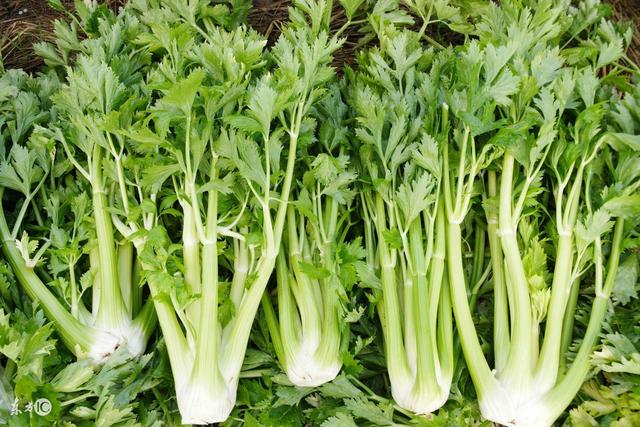
Tools / raw materials
A piece of land for farm tools
Celery fertilizers and pesticides
Methods / steps
I. Variety selection
2. Celery varieties are: King of California, Gao Utah 52Mel 70, Italian winter celery, Zhongqin No. 1, Zhongqin No. 2, Xiqin No. 1 and so on.
Because the celery seeds are very small, the 1000-seed weight is only 0.4-0.5 grams, the germination rate of the old seeds is very low, and some of them almost do not germinate. Therefore, when selecting varieties, we should also consider whether the seeds are fresh seeds for 1-2 years.
Second, cultivate strong seedlings
The method of raising celery seedlings cultivated in overwintering is the same as that of vegetables cultivated in autumn and winter in other greenhouses, and it should still be carried out on the shaded seedling bed. Choose the fertile land with high topography, drought irrigation, waterlogging energy drainage and loose soil as the seedbed. After selecting the seedbed, draw a border surface of 1.2m wide and 6-8m long, shovel the soil of the seedbed evenly 10cm thick, crush and sift it, add fully mature and sifted high-quality ring fertilizer at 3:1, mix well, lay it flat on the seedbed, and leave 1x5 mixed soil to set aside. The nursery bed should be surrounded by a small ridge 25 centimeters high, and then hand in enough water. After the water seeps, use the spare soil left to level the seedbed to avoid potholes on the seedbed. Sow the seeds directly. Because the celery seeds are very small, it is difficult to sow them evenly by direct sowing. Before sowing, mix the seeds with 3-5 times the sifted fine sand. The sowing amount per mu of cultivated field is about 300 grams. The seeding rate is 4-5 grams per square meter. After sowing, cover 0.6-1 cm thick sifted fine sand.
Because celery is cold and cool, cold-resistant and heat-resistant, the seedling stage is at high temperature, and the seeds lose their germinating power when they exceed 30 ℃. In order to produce seedlings neatly and make the seedlings have a suitable growth environment, shade seedling raising method should be adopted. Seedling bed buckle 1.5 meters wide, 1 meter high small arch shed, scaffolding directly covered with sunshade net, sealed all around. Because the celery seed is small, the top soil power is extremely weak, and the seedling bed is slightly dry and hardened, it cannot emerge. If you encounter hot rain before emergence, you should timely use cold well water spray irrigation to reduce the temperature. At the same time, you should gently scratch the seedling bed with lead wire rake to break the knots and reduce the moisture evaporation of the seedling bed, so as to prevent the seedlings from suffocating due to lack of oxygen and prevent high temperature from inhibiting germination.
4-5 days after sowing, a layer of young seedlings is unearthed, which is a weed that should be pulled out manually before celery seedlings are unearthed. About 10 days, the two cotyledons of celery break out of the soil, at this time to strengthen watering to keep the seedbed moist. After all the seedlings are unearthed, the sunshade net should be removed in the morning, evening and cloudy and rainy days, and shade should be given at 10: 00 a.m. to 4:30 on sunny days, so that the seedlings can have a suitable growth temperature as much as possible. When the seedlings grow to two true leaves, the weeds are pulled out manually, and the seedlings are separated by 1 cm, and when there are 3-4 leaves, the seedlings are separated again, so that the distance between the seedlings is about 2 cm, so as to prevent the seedlings from growing into weak or ineffective seedlings due to lack of nutrients.
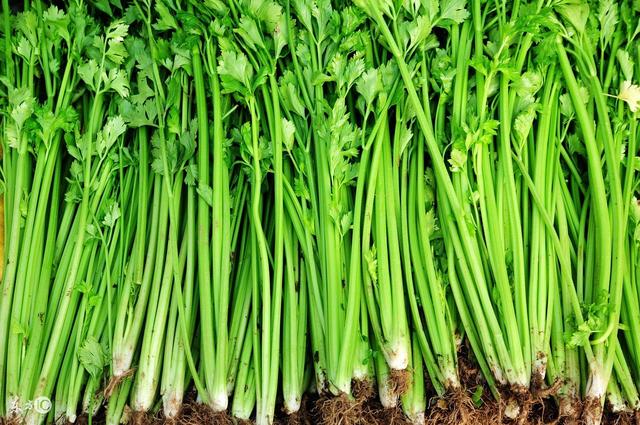
III. Colonization
1. Soil preparation and fertilization: celery is suitable for cultivation in clayey soil with rich organic matter and strong ability to conserve water and fertilizer, which requires relatively high nutrient conditions, so one week before planting, 6000 kg of rotten fertilizer, 50 kg of calcium superphosphate, 25 kg of ammonium carbonate and 4 kg of zinc sulfate were added to each mu of facilities before planting. 4 kg, evenly spread to the surface, ploughing once, ploughing depth 20 cm. Combine with soil preparation to make a 1.5-meter-wide border and pour it deeply.
2. Preparation before planting: before the early frost in early September, when the seedlings grow to 5-6 leaves, they can be planted. Two days before planting, buckle the greenhouse film into the shape of a canopy and pour enough water on the seedbed. The seedling should not destroy the root system as much as possible, and the seedling depth is up to 10 cm. After emergence, the seedlings were graded according to the size of the seedlings. When planting, plant large seedlings first and then small seedlings, so as to avoid the phenomenon of bullying and poor growth of large seedlings and small seedlings.
3. Planting: the method of flat border and furrow planting was used for planting. When planting, each border will open 7 small ditches, deep enough 10 cm, groove width 5 cm, groove spacing 18-20 cm. Put the seedlings upright in the ditch, plant distance: 8 cm, grazing seedlings about 45000; celery 20 cm, about 16000 seedlings per mu. The required plant-row spacing varies with different varieties.
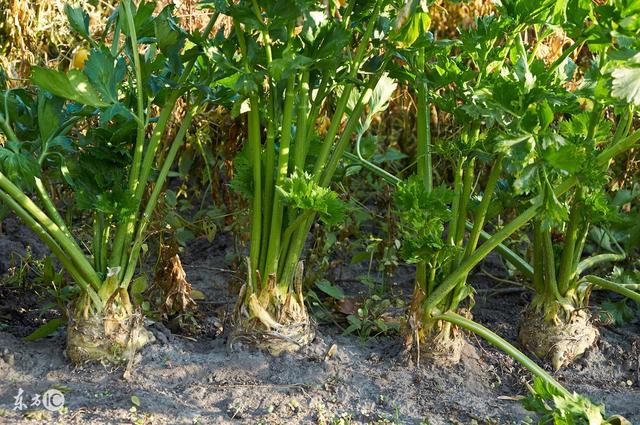
IV. Field management after planting
1. Temperature and humidity management: the optimum growth temperature of celery plant is 15-20 ℃. Before October, the temperature should be controlled by watering and adjusting the amount of air release. The highest temperature at this stage is no more than 22 ℃; after entering November, the temperature should be guaranteed by strengthening the covering and heat preservation and reducing the ventilation rate. The lowest temperature at this stage should not be lower than 10 ℃. If 5-10 ℃ lasts for 10 days, it is easy to form bolting through the vernalization stage. Celery needs high soil moisture throughout the adult period, and the surface should always be kept moist.
2. Light regulation: celery is a vegetable crop that can tolerate weak light. The length of light has little effect on its vegetative growth, but has a great impact on its reproductive growth, especially in overwintering cultivation, poor light regulation will occur prematurely, which will seriously affect the yield and quality. Through light regulation, bolting can be avoided or delayed, so as to achieve the purpose of continuous harvest and high yield. The specific approach is to cover the grass curtain late and early, and control the light time every day within 6-9 hours, so that celery is always under the condition of short-day sunshine.
3. Water and fertilizer management: it depends on seedling watering after planting. Before the heart leaves grow, it is necessary to keep the surface dry and wet, and water shallowly when there is a shortage of water to promote slow seedling. After the heart leaves grow, control watering, during which lead rakes can be used to gently scratch the surface instead of mid-ploughing, block soil capillaries, reduce water evaporation and promote root growth. Be careful when the leaves begin to grow upright, strengthen the water supply, often keep the surface moist, and apply urea once with the water, 15 kg per mu. After entering the heart leaf hypertrophy period, it is necessary to strengthen the supply of potash fertilizer, applying 10 kg biological potash fertilizer per mu and 30 kg ammonium sulfate at the same time. After that, you should chase the fertilizer every time you harvest to make sure that the heart leaves become hypertrophic again. Where there are conditions, biogas residue liquid fertilizer can be used instead of chemical fertilizer, 1000 kg per mu, after the application should be released and detoxified.
The watering and topdressing of celery are more exquisite. Watering is usually carried out 1-2 days before harvest, mainly by watering small water, so that after the plant fully absorbs water, the petiole of the harvest can keep fresh and tender on the market. Topdressing is mainly sprinkled. When there is no dew in the leaves, first sweep the fertilizer particles on the leaves with a soft broom after spraying the chemical fertilizer, otherwise the water droplets on the leaves will burn the leaves and reduce the marketability. After topdressing and watering, it must spread over the heart leaves and dissolve the chemical fertilizer particles contained in the heart leaves, otherwise it will burn out the heart leaves and affect the yield.
4. Several factors that should be paid attention to in celery cultivation. Celery is a vegetable with petiole as a commodity, so all cultivation measures should be carried out around the growth of petiole. First of all, due to water deficiency, nitrogen deficiency and low temperature freezing, the petiole is easy to produce hollow; secondly, when the temperature is too high, the soil is dry and boron is deficient, the petiole will be "split", while celery is prone to heart rot due to calcium deficiency; third, gibberellin is sprayed once when the height of celery plant reaches more than 20 cm and half a month before harvest. It is better to apply a concentration of 10 mg / L water combined with 0.1% potassium dihydrogen phosphate. Spray before 9: 00 a. M. on sunny days, but not on rainy days. After spraying, we should water more and fertilize more. The use of gibberellin can not only increase the yield, but also improve the quality and disease resistance.
5. Harvest: the harvest of overwintering celery in greenhouse includes two methods: one is harvest. Both celery and celery can be harvested in this way. Each plant harvested 2-3 pieces of commercial large petioles. The other is harvesting. Celery is mainly harvested in this way. When the market price is high, look for the right time to harvest and list at one time. No matter which method, during the period of post-harvest transportation and marketing of celery, try to keep the product under the condition of low temperature and high humidity, but can not be frozen, reduce respiration and transpiration, reduce nutrient and water consumption, and keep fresh and tender.
5. Cultivation techniques of celery in open field
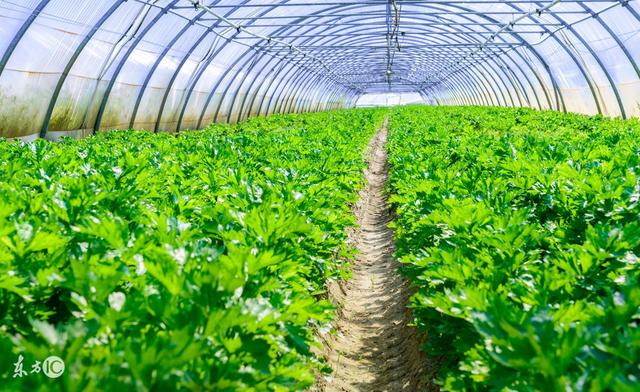
Celery cultivation in open field can be divided into spring celery and autumn celery. Spring celery is raised in mid-late February, planted in early May and harvested in the first and middle of June. It can also be broadcast live in the open field in mid-late March and harvested in mid-late July. Autumn celery can be sown and raised seedlings from late May to early June, planted with wheat stubble in the first and middle of July, and harvested from late September to early October.
VI. Pest control
Aphids are the main pests of overwintering cultivated celery, and the specific control methods are as mentioned earlier. The main diseases that have great influence on the yield and quality of celery are celery leaf spot and celery spot blight.
[symptoms] celery leaf spot, also known as early blight, is mainly harmful to leaves. The first yellow-green water-stained spot, and then developed into a round or irregular shape, the size of 4-10 mm, the disease spot grayish brown, the edge color is slightly dark and unclear, and in severe cases, the disease spot expands and merges into patches, resulting in leaf death. Lesion on stem or petiole elliptic, 3-7 mm, grayish brown, slightly impressed. Serious disease of the whole plant lodging. When the humidity is high, the gray-white mildew layer grows in all the above-mentioned parts.
[prevention and control methods]
The main results are as follows: (1) selecting disease-resistant varieties. Such as Jinnan Shiqin No. 1.
(2) soak the seeds in 48 ℃ warm water for 30 minutes if necessary.
(3) reasonable close planting and scientific irrigation to prevent excessive humidity in the field.
(4) at the initial stage of the disease, 50% methyl thiophanate wettable powder 500 times liquid, or 77% methyl thiophanate wettable powder 500 times liquid spray; 5% chlorothalonil dust agent, 1 kg per mu; or 45% chlorothalonil smoke remover, 200 grams per mu, once every 9 days, 2-3 times continuously or alternately.
[symptoms] celery spot blight is also called leaf blight. Leaves, petioles and stems can all be infected. One is that the old leaves get sick first. The disease spots on the leaves are mostly scattered, varying in size, 3-10 cm in diameter, light brown oil-stained spots at first, then gradually enlarged, brown necrosis in the middle, dark red on the outer edge and obvious in the healthy part, with a small number of small black spots scattered in the middle. The other is that it is not easy to distinguish from the former at first, and the back center is yellowish white or grayish white. There are many black particles on the edge, and there is often a yellow halo outside the spot, which varies in diameter. Petiole or stem infected, diseased spot brown, oblong slightly sunken, scattered black spots in the middle.
Prevention and treatment: (1) seed disinfection.
(2) strengthen field management, avoid flood irrigation, and pay attention to cooling and dehumidification.
(3) before celery is sealed, 45% chlorothalonil is fumigated with 200-250 grams per mu, or 5% chlorothalonil dust is sprayed with 1 kg per mu.
(4) at the initial stage of the disease, spray 75% chlorothalonil wettable powder 600 times, or 64% disinfectant alum 500 times, or 40% polysulfide suspension 500 times, once every 7-10 days for 2-3 consecutive times.
- Prev
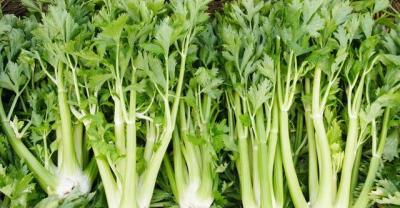
Can dental implants last a lifetime?
Case: 47 years old, with diabetes. The tooth has been implanted for two years, and now it has been loosened for about two months. The implant tooth is loose, is the implant failure? According to China in 1995.
- Next
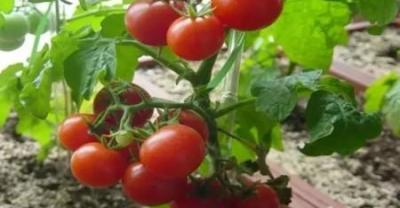
Planting techniques of potted Little Tomato
Small tomato is a kind of fruit vegetable, its leaves are green, blossom all the year round, and the fruit is ruddy. Making potted plants with it can not only beautify the room.
Related
- Fuxing push coffee new agricultural production and marketing class: lack of small-scale processing plants
- Jujube rice field leisure farm deep ploughing Yilan for five years to create a space for organic food and play
- Nongyu Farm-A trial of organic papaya for brave women with advanced technology
- Four points for attention in the prevention and control of diseases and insect pests of edible fungi
- How to add nutrient solution to Edible Fungi
- Is there any good way to control edible fungus mites?
- Open Inoculation Technology of Edible Fungi
- Is there any clever way to use fertilizer for edible fungus in winter?
- What agents are used to kill the pathogens of edible fungi in the mushroom shed?
- Rapid drying of Edible Fungi

